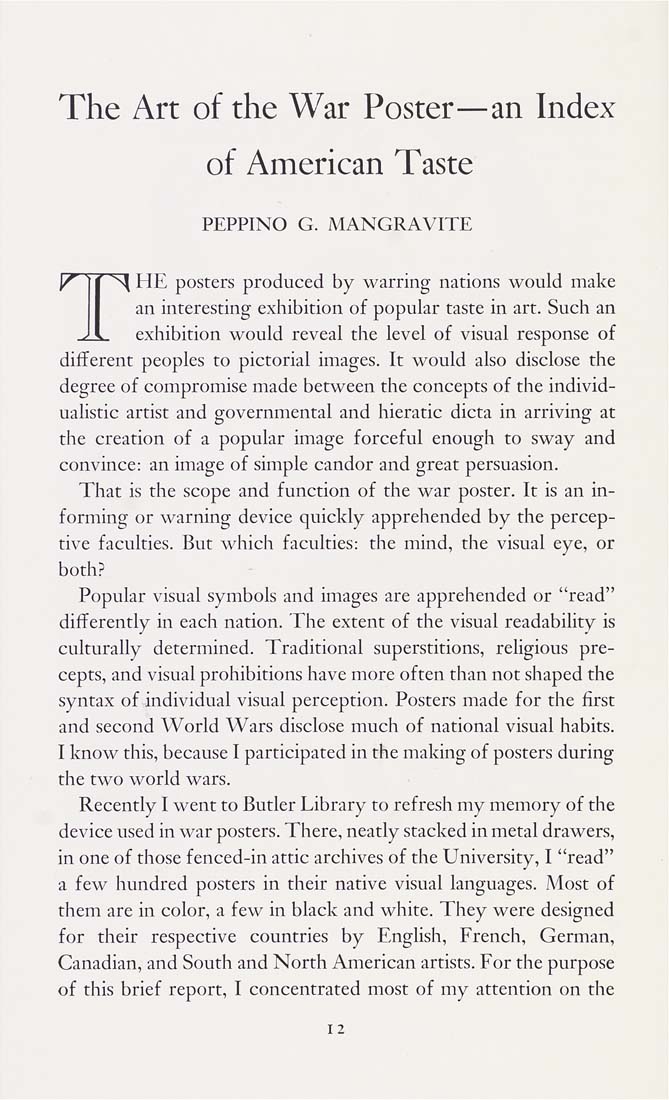Columbia Library columns (v.6(1956Nov-1957May))
(New York : Friends of the Columbia Libraries. )
|
||
|
|
|
|
| v.6,no.2(1957:Feb): Page 12 |

The Art of the War Poster—an Index of American Taste PEPPINO G. MANGRAVITE r (^ If ^ HE posters produced by warring nations would make an interesting exhibition of popular taste in art. Such an exhibition would reveal the level of visual response of different peoples to pictorial images. It would also disclose the degree of compromise made between the concepts of the individ¬ ualistic artist and governmental and hieratic dicta in arriving at the creation of a popular image forceful enough to sway and convince: an image of simple candor and great persuasion. That is the scope and function of the war poster. It is an in¬ forming or warning device quickly apprehended by the percep¬ tive faculties. But which faculties: the mind, the visual eye, or both? Popular visual symbols and images are apprehended or "read" differently in each nation. The extent of the visual readability is culturally determined. Traditional superstitions, rehgious pre¬ cepts, and visual prohibitions have more often than not shaped the syntax of individual visual perception. Posters made for the first and second World Wars disclose much of national visual habits. I know this, because I participated in the making of posters during the two world wars. Recently I went to Butler Library to refresh my memory of the device used in war posters. There, neatly stacked in metal drawers, in one of those fenced-in attic archives of the University, I "read" a few hundred posters in their native visual languages. Most of them are in color, a few in black and white. They were designed for their respective countries by English, French, German, Canadian, and South and North American artists. For the purpose of this brief report, I concentrated most of my attention on the |
| v.6,no.2(1957:Feb): Page 12 |







